(Mise à jour pour être en accord avec la nouvelle version de la source de la page) |
|||
| (64 révisions intermédiaires par 3 utilisateurs non affichées) | |||
| Ligne 10 : | Ligne 10 : | ||
|Cost=30 | |Cost=30 | ||
|Currency=EUR (€) | |Currency=EUR (€) | ||
| − | |Tags=ordinateur, raspberry pi, raspberry pi zero w, wikipedia | + | |Tags=ordinateur, raspberry pi, raspberry pi zero w, wikipedia, récupération, recyclage, NomadeDesMers, nomade des mers |
}} | }} | ||
{{Introduction | {{Introduction | ||
|Introduction=Today we will focus on a subject at the frontier of high and low tech: the computer! This extremely useful tool, which has become indispensable for most of us, is often too over-equipped for our usage. This obviously has an impact on its price, which excludes a large part of the world. Not to mention the environmental impact, especially due to the extraction of minerals needed for their manufacture, which, in most cases are rarely recycled at the end of their lifespan. | |Introduction=Today we will focus on a subject at the frontier of high and low tech: the computer! This extremely useful tool, which has become indispensable for most of us, is often too over-equipped for our usage. This obviously has an impact on its price, which excludes a large part of the world. Not to mention the environmental impact, especially due to the extraction of minerals needed for their manufacture, which, in most cases are rarely recycled at the end of their lifespan. | ||
| − | Today | + | Today we offer you a very basic computer model that still meets most of our daily needs: |
| − | - Classic | + | - '''Classic desktop processing''' (document writing, creating slideshows, etc) |
| − | - | + | - '''Internet browsing''' (social media, sending emails, etc) |
| − | - A | + | - A '''very basic multimedia use''' (no photo editing, video, etc) |
| − | All of this for a price not exceeding 30 euros! To do this, we will use a mini-computer, the | + | All of this for a price not exceeding 30 euros! To do this, we will use a mini-computer, the '''Rasberry Pi''', in its simplest version the Rasberry Pi Zero W. For other computer hardware (screen, keyboard, mouse) we will use those salvaged from old computers. |
Be it a school that wants to create a computer lab, an individual who wants a computer for his home, a grandparent who wants to discover IT or an aspiring developer who wants to get into Linux, there are many reasons to build a desktop PC with Raspberry Pi. | Be it a school that wants to create a computer lab, an individual who wants a computer for his home, a grandparent who wants to discover IT or an aspiring developer who wants to get into Linux, there are many reasons to build a desktop PC with Raspberry Pi. | ||
Together, let us see how you can assemble your own desktop PC running on Linux built on top of Raspberry Pi. | Together, let us see how you can assemble your own desktop PC running on Linux built on top of Raspberry Pi. | ||
| + | }} | ||
| + | {{TutoVideo | ||
| + | |VideoType=Youtube | ||
| + | |VideoURLYoutube=https://youtu.be/fPcCNg45Z1A | ||
}} | }} | ||
{{Materials | {{Materials | ||
| Ligne 33 : | Ligne 37 : | ||
|Step_Picture_01=Ordinateur_low-tech_zero-wireless-details.PNG | |Step_Picture_01=Ordinateur_low-tech_zero-wireless-details.PNG | ||
|Step_Picture_02=Ordinateur_low-tech_keyboard_mouse_screen.jpg | |Step_Picture_02=Ordinateur_low-tech_keyboard_mouse_screen.jpg | ||
| − | |Material=*[https://www.kubii.fr/ Raspberry Pi Zero W] | + | |Material=*[https://www.kubii.fr/ Raspberry Pi Zero W] or [https://www.kubii.fr/cartes-raspberry-pi/3455-raspberry-pi-zero-2-w-5056561800004.html Pi Zero 2 W] |
| − | * | + | * [https://geni.us/rfl16gomicrosd MicroSD] 64GB with Raspberry Pi OS (formerly Raspbian) burned on it (if you haven't prepared your SD card yet, you can go to [https://www.youtube.com/watch?v=ntaXWS8Lk34 the tutorial] and see details in step 1). |
| − | * | + | *RecoveryUSB or wireless keyboard |
| − | * | + | *Recovery USB or wireless mouse |
| − | * | + | *Recovery monitor with HDMI connection |
*HDMI port | *HDMI port | ||
*Micro HDMI adapter | *Micro HDMI adapter | ||
| Ligne 44 : | Ligne 48 : | ||
}} | }} | ||
{{Tuto Step | {{Tuto Step | ||
| − | |Step_Title= | + | |Step_Title=Prepare your SD card - Install Raspberry Pi OS |
|Step_Content=The Raspberry Pi does not have a hard disk. Instead, it uses an SD card as its hard disk. We will have to install an operating system on it, here we will choose Raspbian, a robust distribution adapted for a large majority of uses and optimized for the Raspberry Pi. We recommend that you choose [https://geni.us/rfl16gomicrosd an SD card that is fast and reliable], the performance of the Raspberry Pi being strongly influenced by the quality of the chosen SD card. | |Step_Content=The Raspberry Pi does not have a hard disk. Instead, it uses an SD card as its hard disk. We will have to install an operating system on it, here we will choose Raspbian, a robust distribution adapted for a large majority of uses and optimized for the Raspberry Pi. We recommend that you choose [https://geni.us/rfl16gomicrosd an SD card that is fast and reliable], the performance of the Raspberry Pi being strongly influenced by the quality of the chosen SD card. | ||
| − | *For this step, you will need | + | *For this step, you will need [https://www.raspberrypi.com/software/ download the latest version of the Raspberry Pi OS distribution], which we will install on the SD card of your Raspberry Pi. We advise you to use the dedicated Raspberry Pi Imager software. [https://www.youtube.com/watch?v=ntaXWS8Lk34 Feel free to watch this 45 second video tutorial] |
| − | * | + | *Note that as far as hardware is concerned, you will have to be able to write to the SD card, which requires either a computer with an adapted port or getting [https://geni.us/rfllecteurcartesd an external card reader.] |
| − | + | - Install Raspberry Pi Imager in the version corresponding to your operating system (Windows, Mac, Ubuntu). | |
| − | + | - Insert your SD card into your computer's card reader, and once it is recognized, launch Raspberry Pi Imager. | |
| − | + | - Choose the desired operating system. In our case, the latest version of Raspberry Pi OS (32-bit). | |
| − | + | - Choose the storage device: your SD card previously formatted in FAT32 format. | |
| − | + | - Launch the writing ! | |
| − | The | + | <br /> The SD card is ready, all you have to do is insert it into your Raspberry Pi and plug it in. |
| − | + | |Step_Picture_00=Ordinateur_low-tech_Screenshot_2023-02-07_at_19-09-17_Raspberry_Pi_OS_Raspberry_Pi.png | |
| − | + | |Step_Picture_01=Ordinateur_low-tech_Capture_1.JPG | |
| − | |Step_Picture_00=Ordinateur_low- | + | |Step_Picture_02=Ordinateur_low-tech_Capture_2.JPG |
| − | |Step_Picture_01=Ordinateur_low- | + | |Step_Picture_03=Ordinateur_low-tech_Captured_3.JPG |
| − | |Step_Picture_02=Ordinateur_low- | ||
| − | |Step_Picture_03=Ordinateur_low- | ||
}} | }} | ||
{{Tuto Step | {{Tuto Step | ||
| − | |Step_Title= | + | |Step_Title=Powering up your Raspberry Pi and finishing the configuration |
| − | + | |Step_Content=* First, connect your Raspberry to the monitor and keyboard, '''without connecting it to the power supply''', and insert the SD card. | |
| − | |||
| − | First, connect your Raspberry to the monitor and keyboard, '''without connecting it to the power supply''', and insert the SD card | ||
| − | |||
| − | |||
| − | |||
| − | |||
| − | |||
| − | |||
| − | |||
| − | |||
| − | |||
| − | |||
| − | |||
| − | |||
| − | |||
| − | |||
| − | |||
| − | |||
| − | |||
| − | |||
| − | |||
| − | |||
| − | |||
| − | |||
| − | |||
| − | |||
| − | |||
| − | |||
| − | |||
| − | |||
| − | |||
| − | |||
| − | |||
| − | |||
| − | |||
| − | |||
| − | |||
| − | |||
| − | |||
| − | |||
| − | |||
| − | |||
| − | |||
| − | |||
| − | |||
| − | |||
| − | |||
| − | |||
| − | |||
| − | |||
| − | |||
| − | |||
| − | |||
| − | |||
| − | |||
| − | |||
| − | |||
| − | |||
| − | |||
| − | |||
| − | |||
| − | |||
| − | |||
| − | |||
| − | |||
| − | |||
| − | |||
| − | |||
| − | |||
| − | |||
| − | |||
| − | + | * '''Once this is done''', connect the power cable of the Raspberry (Always in that order !). | |
| − | The | + | * Your Raspberry Pi is now powered on! There is no on/off button; your Raspberry Pi computer simply turns on when plugged into the power supply. The first time it turns on, the Raspberry Pi Operating System Setup Wizard appears. This helps you complete the configuration of your Raspberry Pi: connecting it to your Wi-Fi network, choosing the correct region and language settings, and so on (you can also change all these settings later). The wizard also installs all the bug and performance updates that have become available since the full version of Raspberry Pi OS that Raspberry Pi Imager installed on your microSD card. |
| − | This | + | <br />{{Idea|If, when you start using your Raspberry Pi, you notice a flash in the upper right corner of your screen, it means that your Raspberry Pi is not getting enough power. This problem is caused by using the wrong power supply for the job, and is one of the most common problems users experience. Our official power supplies will provide sufficient and reliable power to your Raspberry Pi.}}<br /> |
| − | |Step_Picture_00=Ordinateur_low- | + | |Step_Picture_00=Ordinateur_low-tech_14298_1.jpg |
}} | }} | ||
{{Tuto Step | {{Tuto Step | ||
| Ligne 166 : | Ligne 97 : | ||
*Option 1: Use Kiwix as a Reader | *Option 1: Use Kiwix as a Reader | ||
| − | The KIWIX Reader allows you to '''consult offline, without an internet connection, content packages''' (Wikipedia, TEDx, ...) in ZIM format. It is available for all major operating systems (Windows, Mac, GNU/Linux, Android). It comes as a standalone application or browser plugin. Install it and consult Wikipedia content directly on | + | The KIWIX Reader allows you to '''consult offline, without an internet connection, content packages''' (Wikipedia, TEDx, ...) in ZIM format. It is available for all major operating systems (Windows, Mac, GNU/Linux, Android). It comes as a standalone application or browser plugin. Install it and consult Wikipedia content directly on your Low-tech computer. |
<br /> | <br /> | ||
| Ligne 182 : | Ligne 113 : | ||
* [https://www.kiwix.org/en/downloads/kiwix-reader/ Download the software] and double click on the file to open it. | * [https://www.kiwix.org/en/downloads/kiwix-reader/ Download the software] and double click on the file to open it. | ||
| − | *The first time you open Kiwix, a window inviting you to visit the library should appear. If this is not the case (or if you want whatever is available at all times), go to | + | *The first time you open Kiwix, a window inviting you to visit the library should appear. If this is not the case (or if you want whatever is available at all times), go to Fichier > Parcourir la bibliothèque. Choose your language, then download the corresponding ZIM file. |
| − | *Once the ZIM file is downloaded, Kiwix should ask you if you want to open it. If this is not the case (or if you want to open an old file), click on ' | + | *Once the ZIM file is downloaded, Kiwix should ask you if you want to open it. If this is not the case (or if you want to open an old file), click on 'Ma bibliothèque' in the top left corner of the application window. <br /> |
<br /> | <br /> | ||
| Ligne 197 : | Ligne 128 : | ||
_ a microSD card (or SD depending on the Raspberry Pi model that you use). Choose one of good quality with adequate memory for the size of the content you wish to diffuse. 32GB is a good start. For the heavy version of English Wikipedia, you will need 128GB or more. | _ a microSD card (or SD depending on the Raspberry Pi model that you use). Choose one of good quality with adequate memory for the size of the content you wish to diffuse. 32GB is a good start. For the heavy version of English Wikipedia, you will need 128GB or more. | ||
| − | *Go to https://download.kiwix.org/release/kiwix-hotspot/ and open the sub directory containing the most recent version. Download the installer corresponding to the operating system of the computer you | + | *Go to https://download.kiwix.org/release/kiwix-hotspot/ and open the sub directory containing the most recent version. Download the installer corresponding to the operating system of the computer you used to set up the SD card (Windows 32 or 64 BIT, macOS or Linux). |
*'''Prepare your SD card:''' To avoid any problem ensure that your SD card is indeed empty and formatted. | *'''Prepare your SD card:''' To avoid any problem ensure that your SD card is indeed empty and formatted. | ||
* '''Main Screen:''' After launching the Kiwix Hotspot program, you will see the main screen (image 1). The different configuration parameters are described in images 2 and 3. | * '''Main Screen:''' After launching the Kiwix Hotspot program, you will see the main screen (image 1). The different configuration parameters are described in images 2 and 3. | ||
| Ligne 203 : | Ligne 134 : | ||
*'''Installation:''' Once you have made your choices, chick on 'Run installation' on the main screen. The window 'Installer status' will be displayed (image 5). | *'''Installation:''' Once you have made your choices, chick on 'Run installation' on the main screen. The window 'Installer status' will be displayed (image 5). | ||
| − | The installation can take many hours. Do not interrupt even if | + | The installation can take many hours. Do not interrupt even if you get the impression that nothing is happening. Wait until a dialog box indicates to you that the installation is complete. Be careful to ensure that your computer does not go into Sleep mode. |
| − | *Once the installation is complete, remove the SD | + | *Once the installation is complete, remove the SD card from your computer. |
*Insert the SD card in your Raspberry Pi, connect it to the power supply and let it startup (this can take one or two minutes). | *Insert the SD card in your Raspberry Pi, connect it to the power supply and let it startup (this can take one or two minutes). | ||
*Connect your computer, tablet or smartphone to the local WiFi network with the name you chose during installation. | *Connect your computer, tablet or smartphone to the local WiFi network with the name you chose during installation. | ||
| − | *Open your internet browser and enter the following address in the address bar: | + | *Open your internet browser and enter the following address in the address bar: http://<name>.hotspot, where <name> is the 'Project Name' you used during the installation (the same as the WiFi network). |
| − | http://<name>.hotspot where <name> is the 'Project Name' you used during the installation (the same as the WiFi network). | ||
*You should now see the Kiwix Hotspot homepage (see image 6). | *You should now see the Kiwix Hotspot homepage (see image 6). | ||
|Step_Picture_00=Ordinateur_low-tech_Capture.JPG | |Step_Picture_00=Ordinateur_low-tech_Capture.JPG | ||
Version actuelle datée du 7 mars 2023 à 20:41
Description
A basic computer model that still meets most of our daily needs. All for a price not exceeding 30 euros!
Sommaire
Sommaire
- 1 Description
- 2 Sommaire
- 3 Introduction
- 4 Video d'introduction
- 5 Étape 1 - Prepare your SD card - Install Raspberry Pi OS
- 6 Étape 2 - Powering up your Raspberry Pi and finishing the configuration
- 7 Étape 3 - Consult Wikipedia offline.
- 8 Étape 4 - Option 1: Use Kiwix as a Reader
- 9 Étape 5 - Option 2: Use Kiwix as a Hotspot
- 10 Notes et références
- 11 Commentaires
Introduction
Today we will focus on a subject at the frontier of high and low tech: the computer! This extremely useful tool, which has become indispensable for most of us, is often too over-equipped for our usage. This obviously has an impact on its price, which excludes a large part of the world. Not to mention the environmental impact, especially due to the extraction of minerals needed for their manufacture, which, in most cases are rarely recycled at the end of their lifespan.
Today we offer you a very basic computer model that still meets most of our daily needs:
- Classic desktop processing (document writing, creating slideshows, etc)
- Internet browsing (social media, sending emails, etc)
- A very basic multimedia use (no photo editing, video, etc)
All of this for a price not exceeding 30 euros! To do this, we will use a mini-computer, the Rasberry Pi, in its simplest version the Rasberry Pi Zero W. For other computer hardware (screen, keyboard, mouse) we will use those salvaged from old computers.
Be it a school that wants to create a computer lab, an individual who wants a computer for his home, a grandparent who wants to discover IT or an aspiring developer who wants to get into Linux, there are many reasons to build a desktop PC with Raspberry Pi.
Together, let us see how you can assemble your own desktop PC running on Linux built on top of Raspberry Pi.Youtube
Matériaux
- Raspberry Pi Zero W or Pi Zero 2 W
- MicroSD 64GB with Raspberry Pi OS (formerly Raspbian) burned on it (if you haven't prepared your SD card yet, you can go to the tutorial and see details in step 1).
- RecoveryUSB or wireless keyboard
- Recovery USB or wireless mouse
- Recovery monitor with HDMI connection
- HDMI port
- Micro HDMI adapter
- Micro USB adapter
Outils
Étape 1 - Prepare your SD card - Install Raspberry Pi OS
The Raspberry Pi does not have a hard disk. Instead, it uses an SD card as its hard disk. We will have to install an operating system on it, here we will choose Raspbian, a robust distribution adapted for a large majority of uses and optimized for the Raspberry Pi. We recommend that you choose an SD card that is fast and reliable, the performance of the Raspberry Pi being strongly influenced by the quality of the chosen SD card.
- For this step, you will need download the latest version of the Raspberry Pi OS distribution, which we will install on the SD card of your Raspberry Pi. We advise you to use the dedicated Raspberry Pi Imager software. Feel free to watch this 45 second video tutorial
- Note that as far as hardware is concerned, you will have to be able to write to the SD card, which requires either a computer with an adapted port or getting an external card reader.
- Install Raspberry Pi Imager in the version corresponding to your operating system (Windows, Mac, Ubuntu).
- Insert your SD card into your computer's card reader, and once it is recognized, launch Raspberry Pi Imager.
- Choose the desired operating system. In our case, the latest version of Raspberry Pi OS (32-bit).
- Choose the storage device: your SD card previously formatted in FAT32 format.
- Launch the writing !
The SD card is ready, all you have to do is insert it into your Raspberry Pi and plug it in.
Étape 2 - Powering up your Raspberry Pi and finishing the configuration
- First, connect your Raspberry to the monitor and keyboard, without connecting it to the power supply, and insert the SD card.
- Once this is done, connect the power cable of the Raspberry (Always in that order !).
- Your Raspberry Pi is now powered on! There is no on/off button; your Raspberry Pi computer simply turns on when plugged into the power supply. The first time it turns on, the Raspberry Pi Operating System Setup Wizard appears. This helps you complete the configuration of your Raspberry Pi: connecting it to your Wi-Fi network, choosing the correct region and language settings, and so on (you can also change all these settings later). The wizard also installs all the bug and performance updates that have become available since the full version of Raspberry Pi OS that Raspberry Pi Imager installed on your microSD card.
Étape 3 - Consult Wikipedia offline.
We recommend using the Low-tech computer to be able to consult Wikipedia offline.
To do this, we will use the Kiwix software. This free software allows you to have the entire Wikipedia encyclopedia (and many other contents) in hand wherever you are! On a boat in the middle of nowhere or even in prison, it allows access to all of human knowledge. You do not need internet access, everything is saved on your computer, your USB key or DVD.
For this you will need:
- Kiwix (the software)
- The ZIM file with the Wikipedia content in the specific language that the user wants (for ex. French).
We will present two slightly different installation options:
- Option 1: Use Kiwix as a Reader
The KIWIX Reader allows you to consult offline, without an internet connection, content packages (Wikipedia, TEDx, ...) in ZIM format. It is available for all major operating systems (Windows, Mac, GNU/Linux, Android). It comes as a standalone application or browser plugin. Install it and consult Wikipedia content directly on your Low-tech computer.
- Option 2: Use Kiwix as a Hotspot
KIWIX hotspot allows you to convert a low-cost mini-computer like the Raspberry Pi into a relay to distribute free content, without an internet connection, via a local network. This solution is especially useful for schools, libraries, communities, humanitarian organizations, etc. End users only need a device capable of detecting the network with the browser, they do not need to download and install anything on their device. KIWIX Hotspot works on Windows, macOS and Linux.
Étape 4 - Option 1: Use Kiwix as a Reader
We will describe here the installation on a PC with the Windows operation system, but all versions are available [[1]].
- Download the software and double click on the file to open it.
- The first time you open Kiwix, a window inviting you to visit the library should appear. If this is not the case (or if you want whatever is available at all times), go to Fichier > Parcourir la bibliothèque. Choose your language, then download the corresponding ZIM file.
- Once the ZIM file is downloaded, Kiwix should ask you if you want to open it. If this is not the case (or if you want to open an old file), click on 'Ma bibliothèque' in the top left corner of the application window.
Étape 5 - Option 2: Use Kiwix as a Hotspot
To complete this installation you will need:
- a computer (running on Windows, macOS or GNU/Linux) with an SD card reader.
_ a microSD card (or SD depending on the Raspberry Pi model that you use). Choose one of good quality with adequate memory for the size of the content you wish to diffuse. 32GB is a good start. For the heavy version of English Wikipedia, you will need 128GB or more.
- Go to https://download.kiwix.org/release/kiwix-hotspot/ and open the sub directory containing the most recent version. Download the installer corresponding to the operating system of the computer you used to set up the SD card (Windows 32 or 64 BIT, macOS or Linux).
- Prepare your SD card: To avoid any problem ensure that your SD card is indeed empty and formatted.
- Main Screen: After launching the Kiwix Hotspot program, you will see the main screen (image 1). The different configuration parameters are described in images 2 and 3.
- Select content: The 'content selector' allows you to choose the content packages that will be installed on your network. It is possible to choose your preferred language to only display content in the selected language (see image 4).
- Installation: Once you have made your choices, chick on 'Run installation' on the main screen. The window 'Installer status' will be displayed (image 5).
The installation can take many hours. Do not interrupt even if you get the impression that nothing is happening. Wait until a dialog box indicates to you that the installation is complete. Be careful to ensure that your computer does not go into Sleep mode.
- Once the installation is complete, remove the SD card from your computer.
- Insert the SD card in your Raspberry Pi, connect it to the power supply and let it startup (this can take one or two minutes).
- Connect your computer, tablet or smartphone to the local WiFi network with the name you chose during installation.
- Open your internet browser and enter the following address in the address bar: http://<name>.hotspot, where <name> is the 'Project Name' you used during the installation (the same as the WiFi network).
- You should now see the Kiwix Hotspot homepage (see image 6).
Notes et références
- Installation and configuration of Raspbian: https://raspbian-france.fr/installer-raspbian-premier-demarrage-configuration/
- Create your desktop computer under Linux for less than 200€ with the Raspberry Pi: https://raspbian-france.fr/ordinateur-bureau-linux-raspberry-pi/
- Install and use KIWIX on Windows or macOS : https://www.kiwix.org/en/documentation/installing-and-using-kiwix-on-windows-or-macos/
- How to configure KIWIX Hotspot : https://www.kiwix.org/en/documentation/how-to-set-up-kiwix-hotspot/
English translation by Preethi Poovathumkadavil
Published
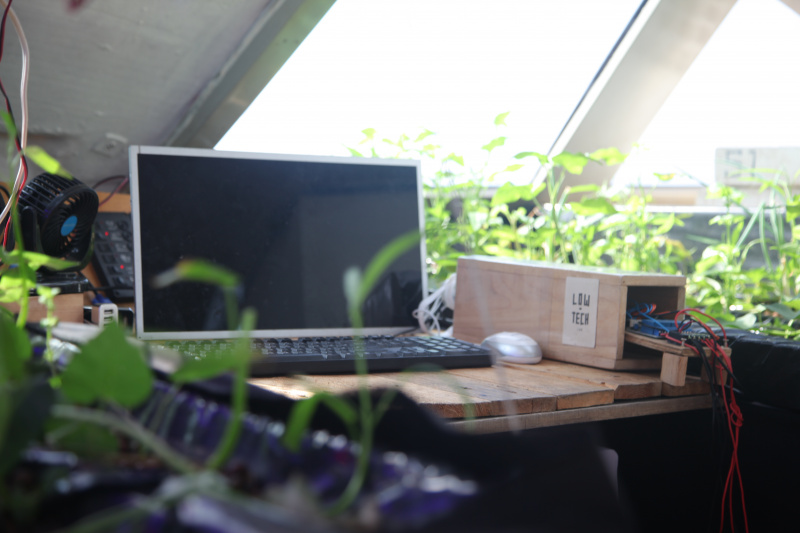
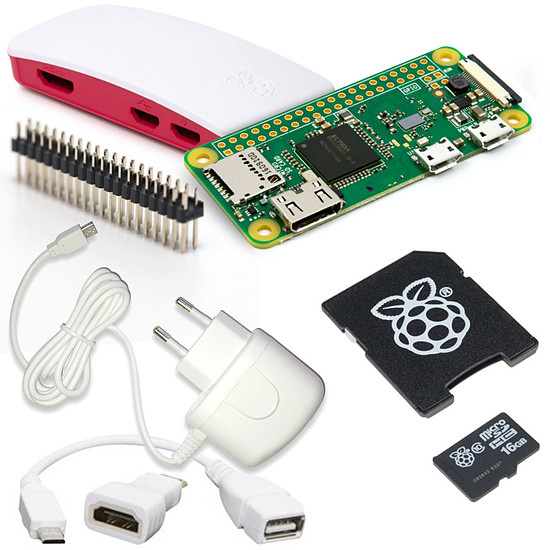
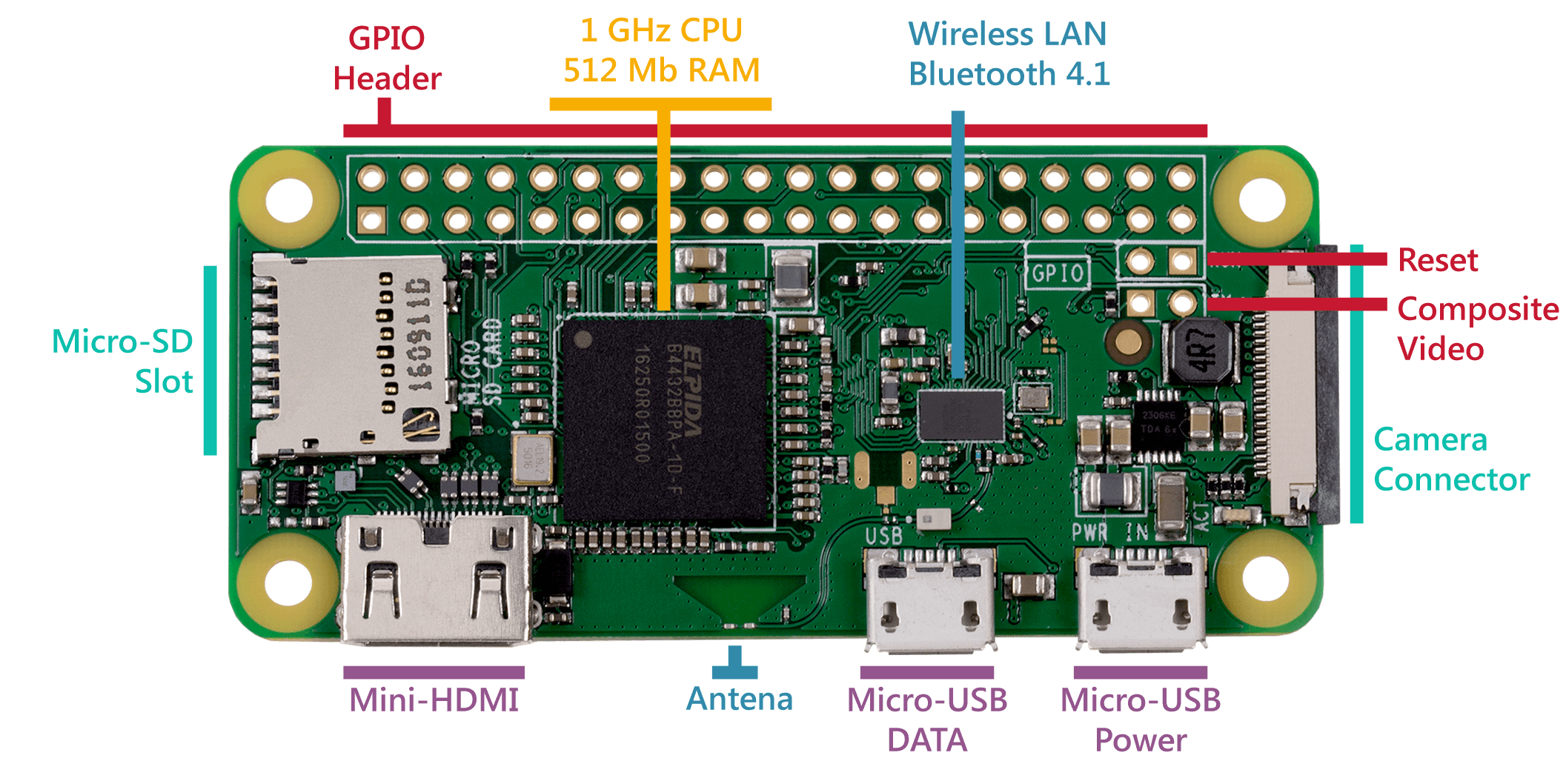
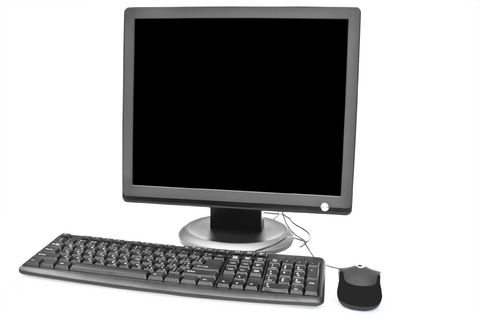
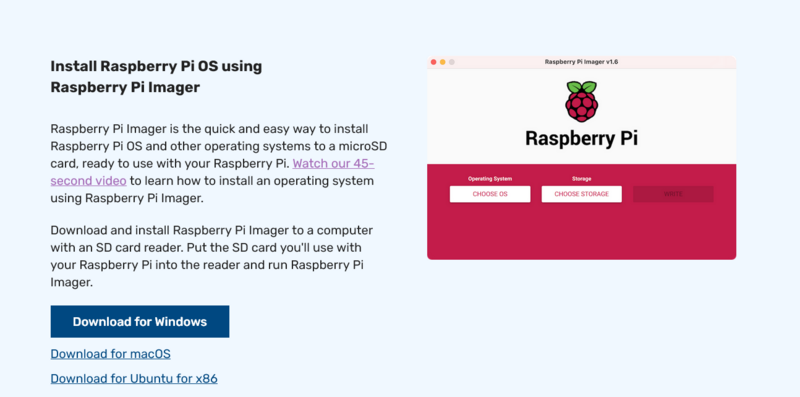
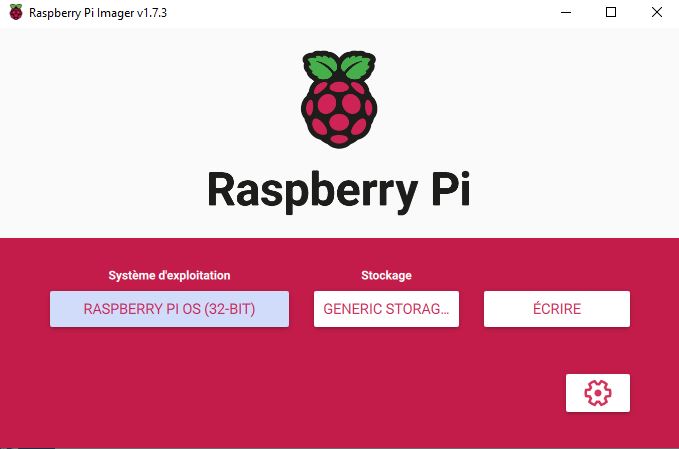
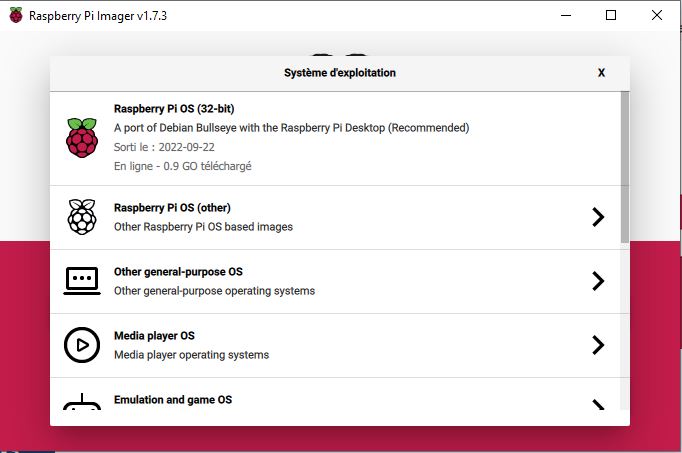
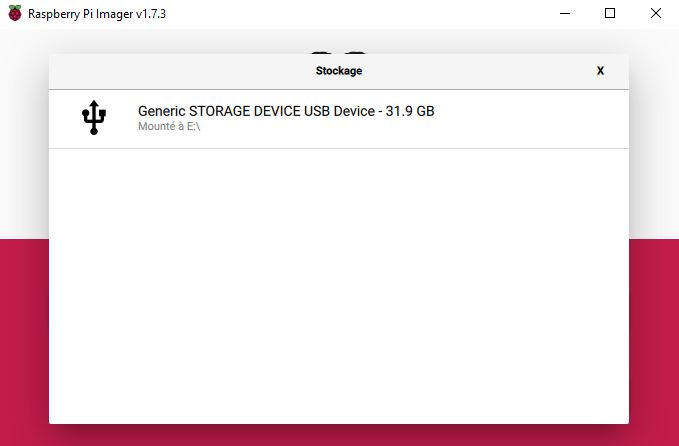
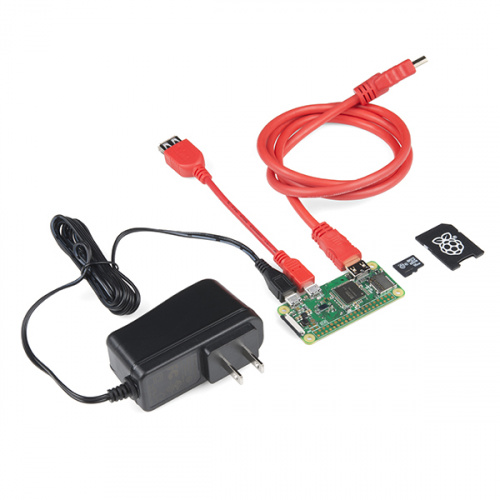
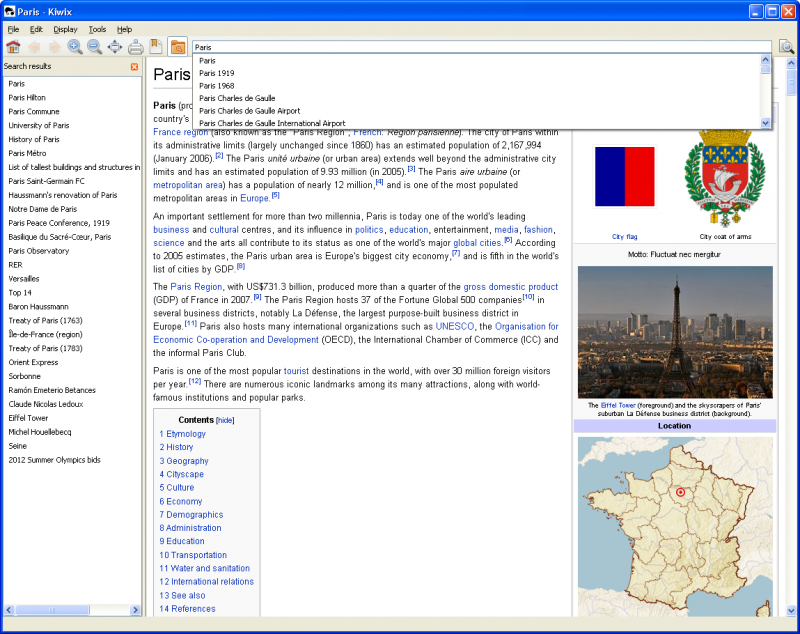

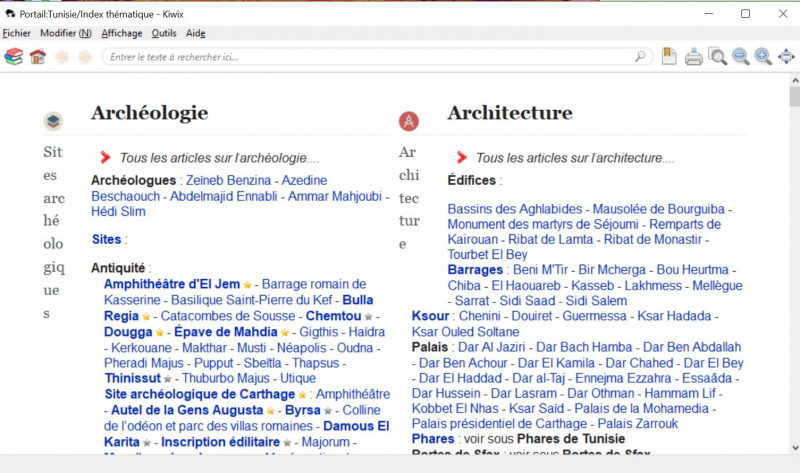
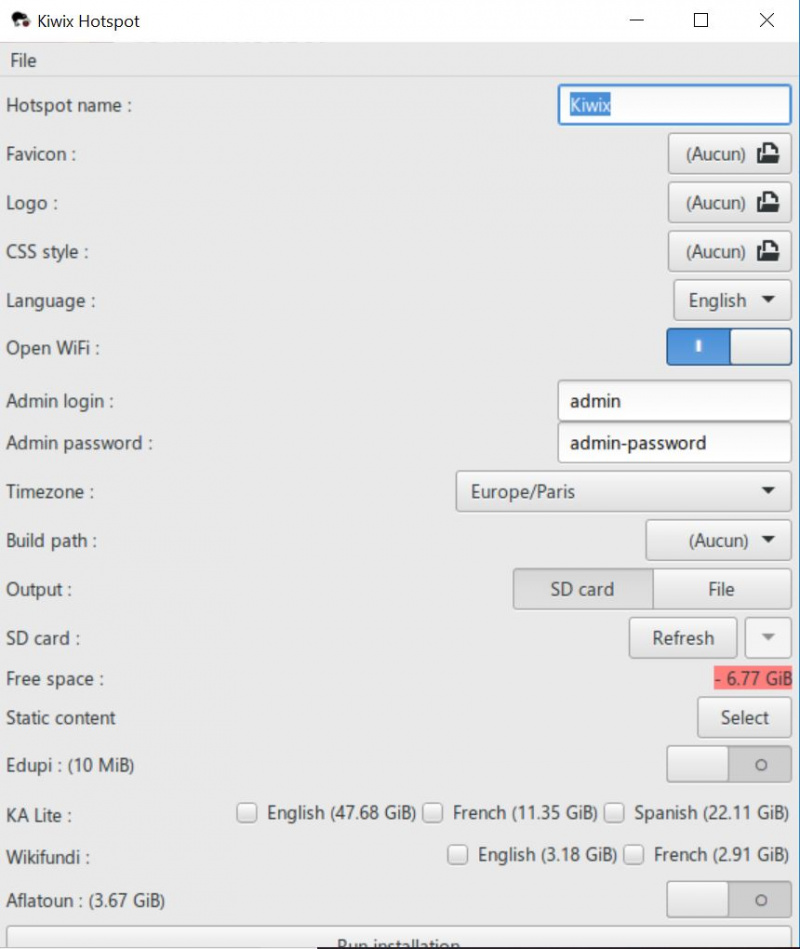
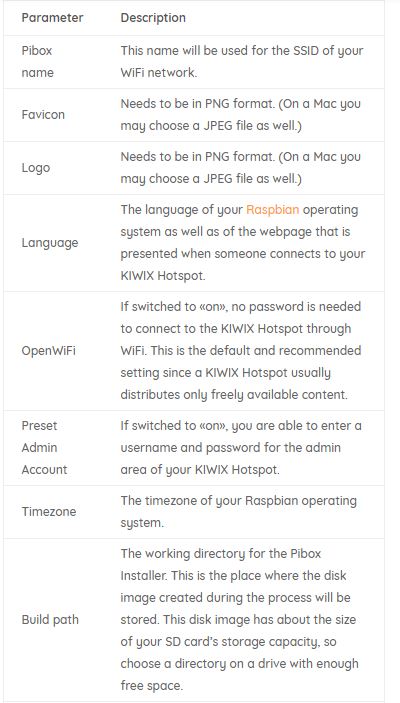
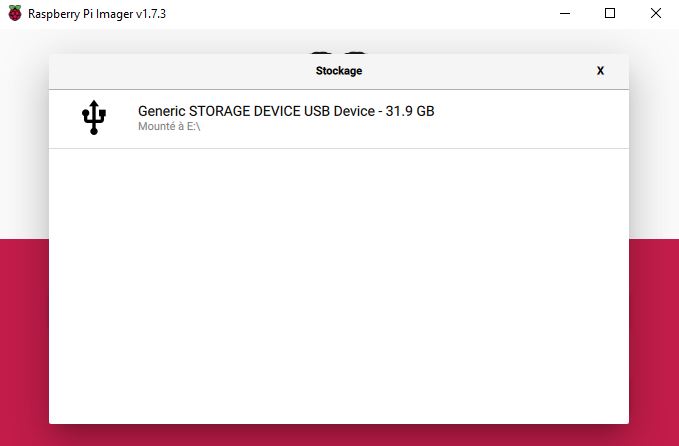
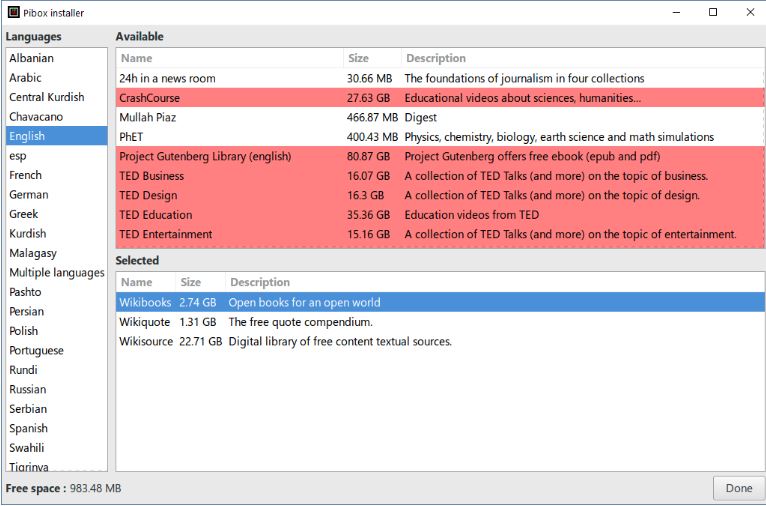
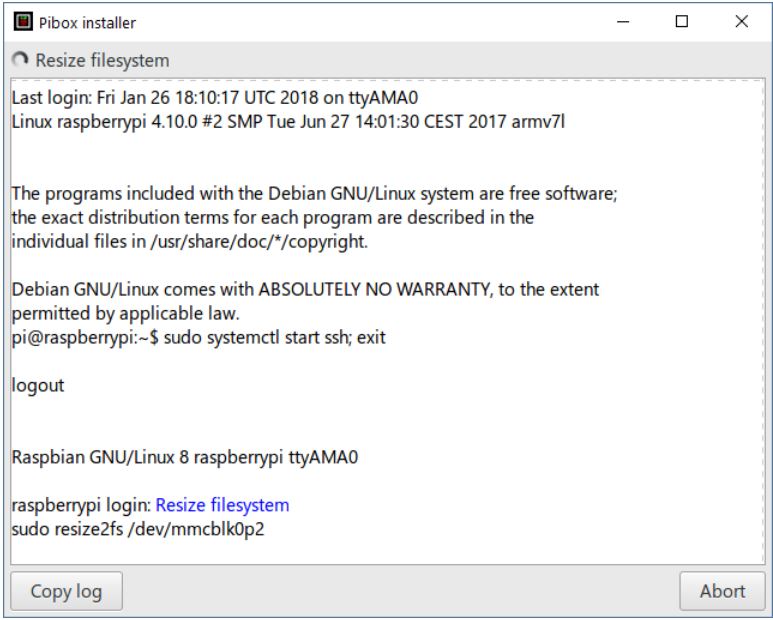

 Français
Français English
English Deutsch
Deutsch Español
Español Italiano
Italiano Português
Português